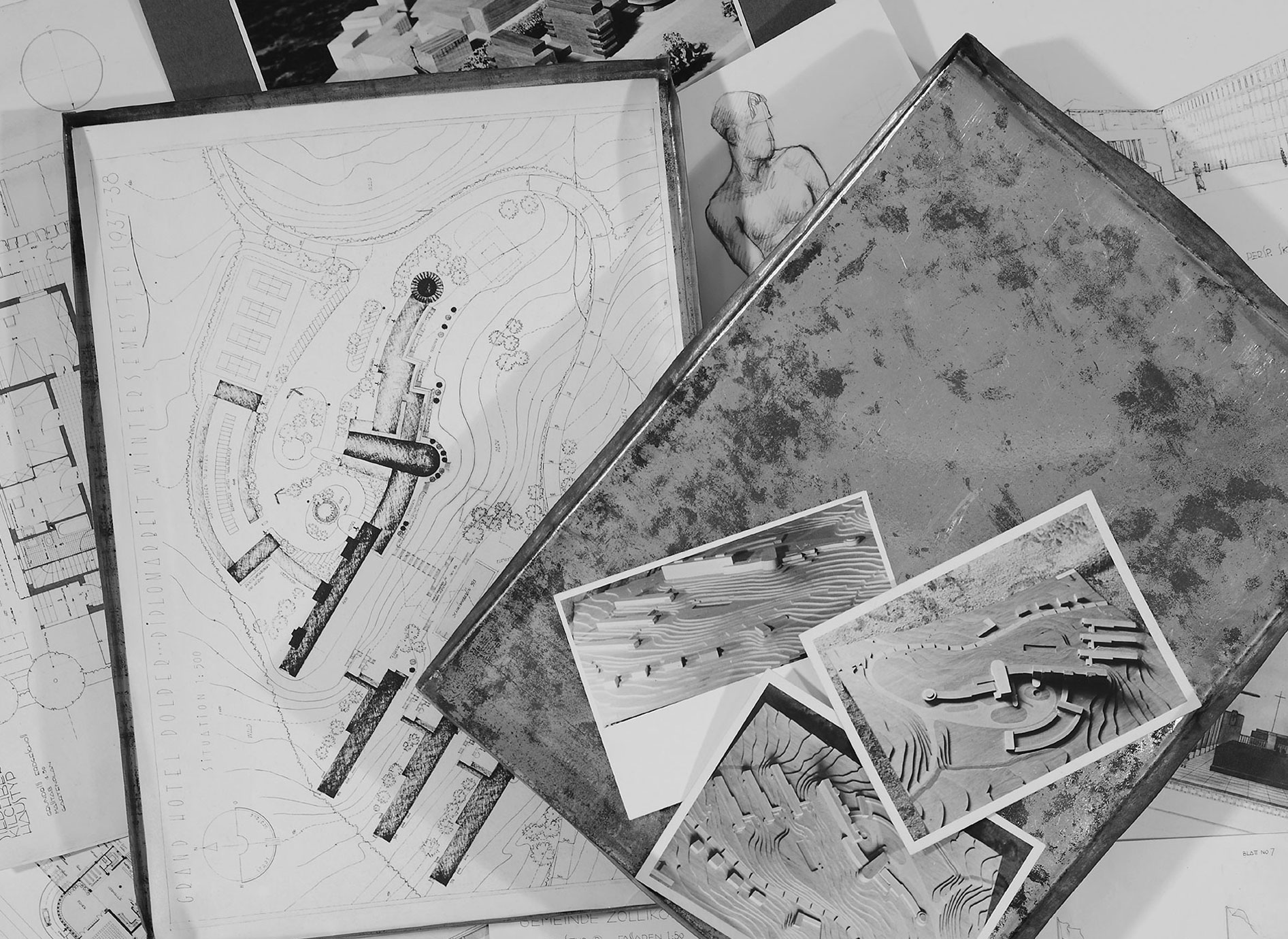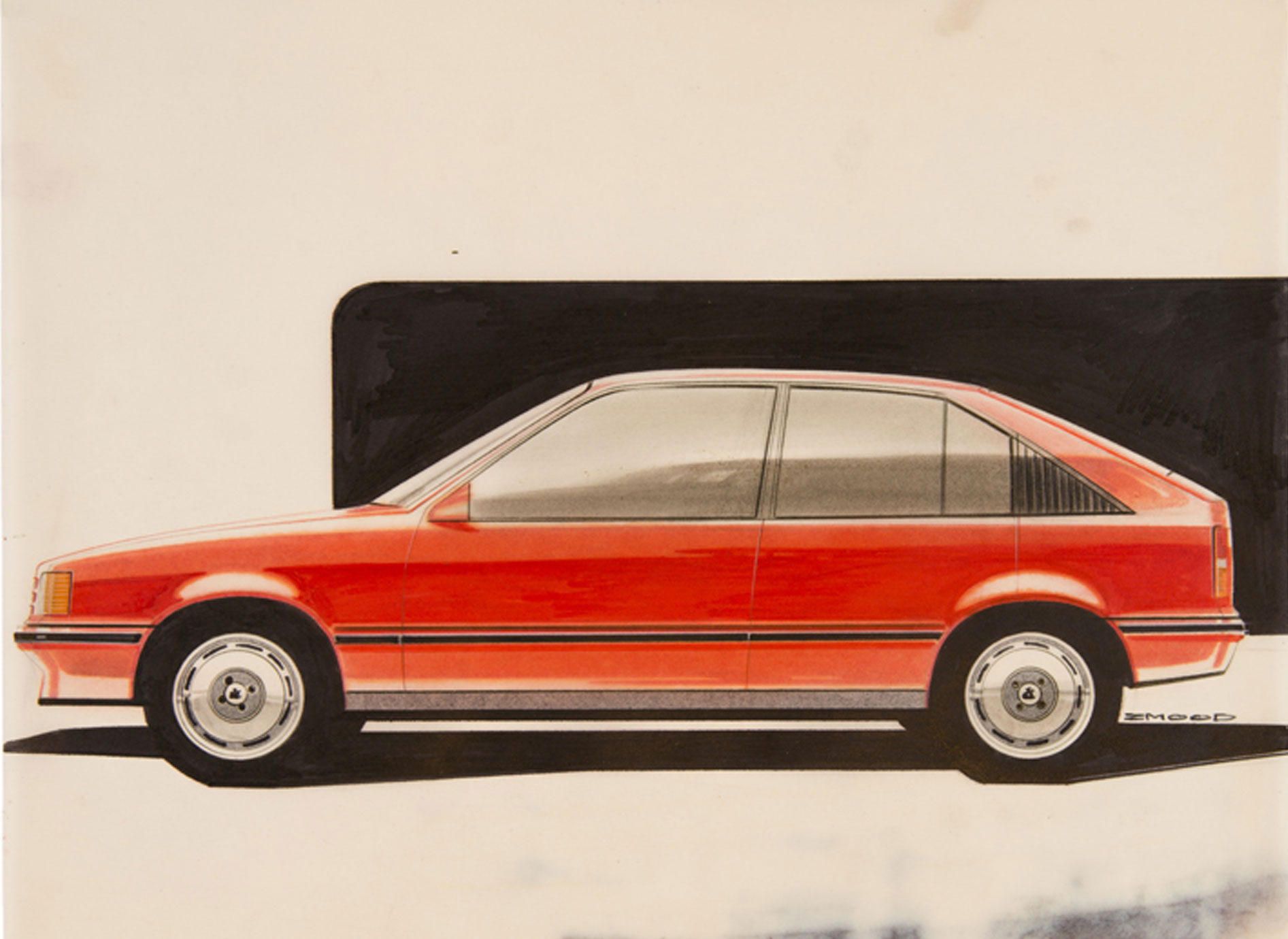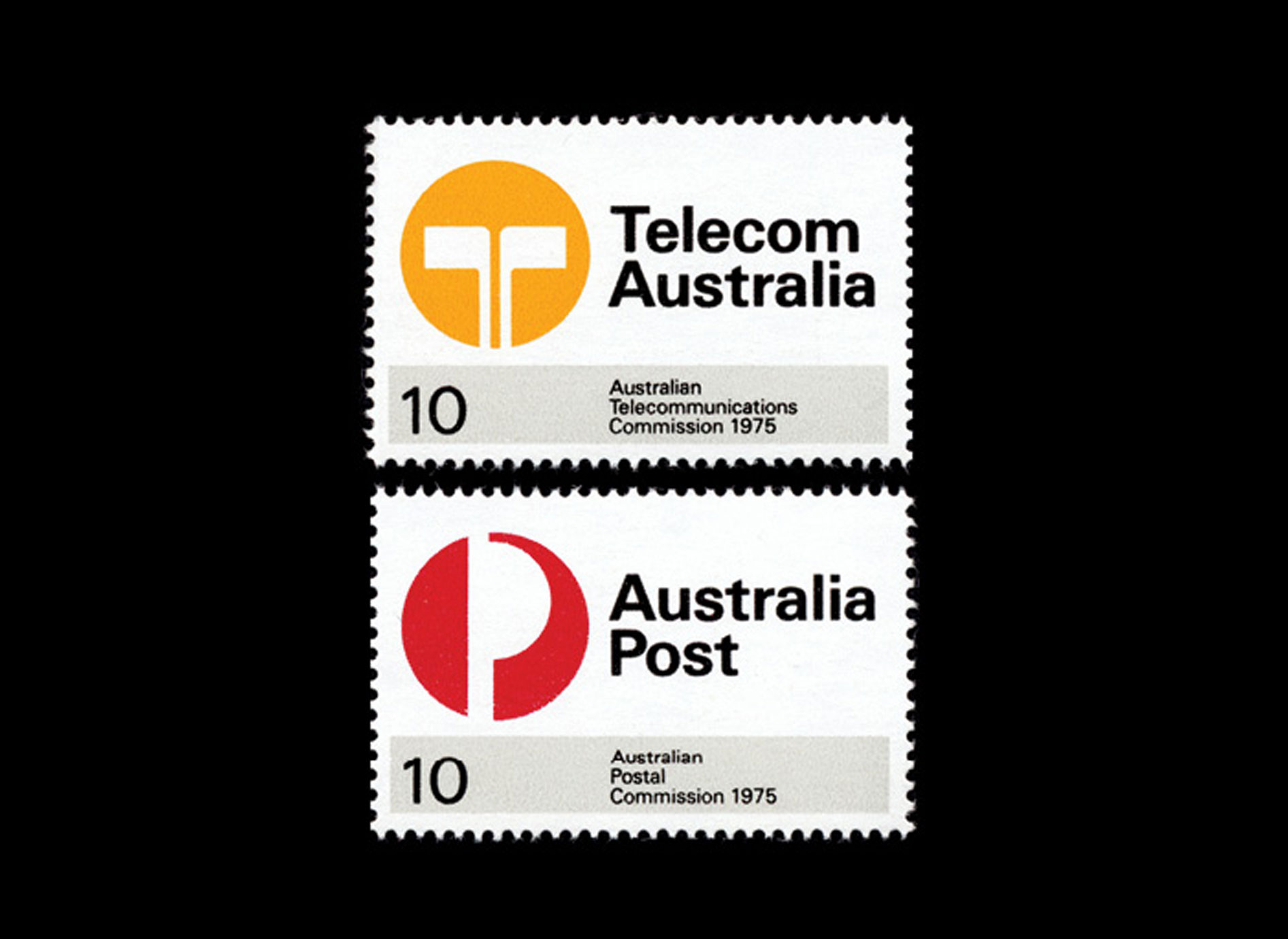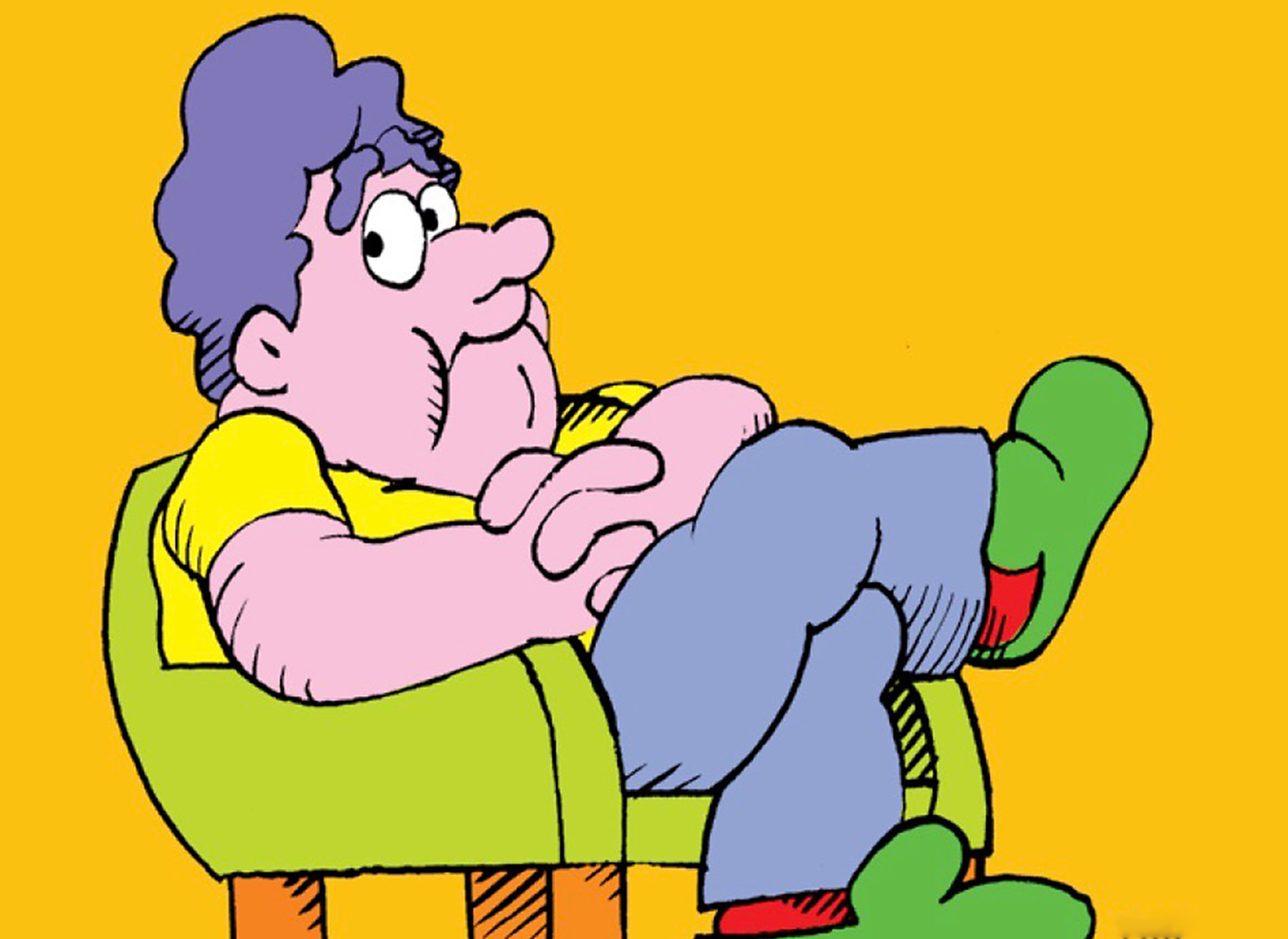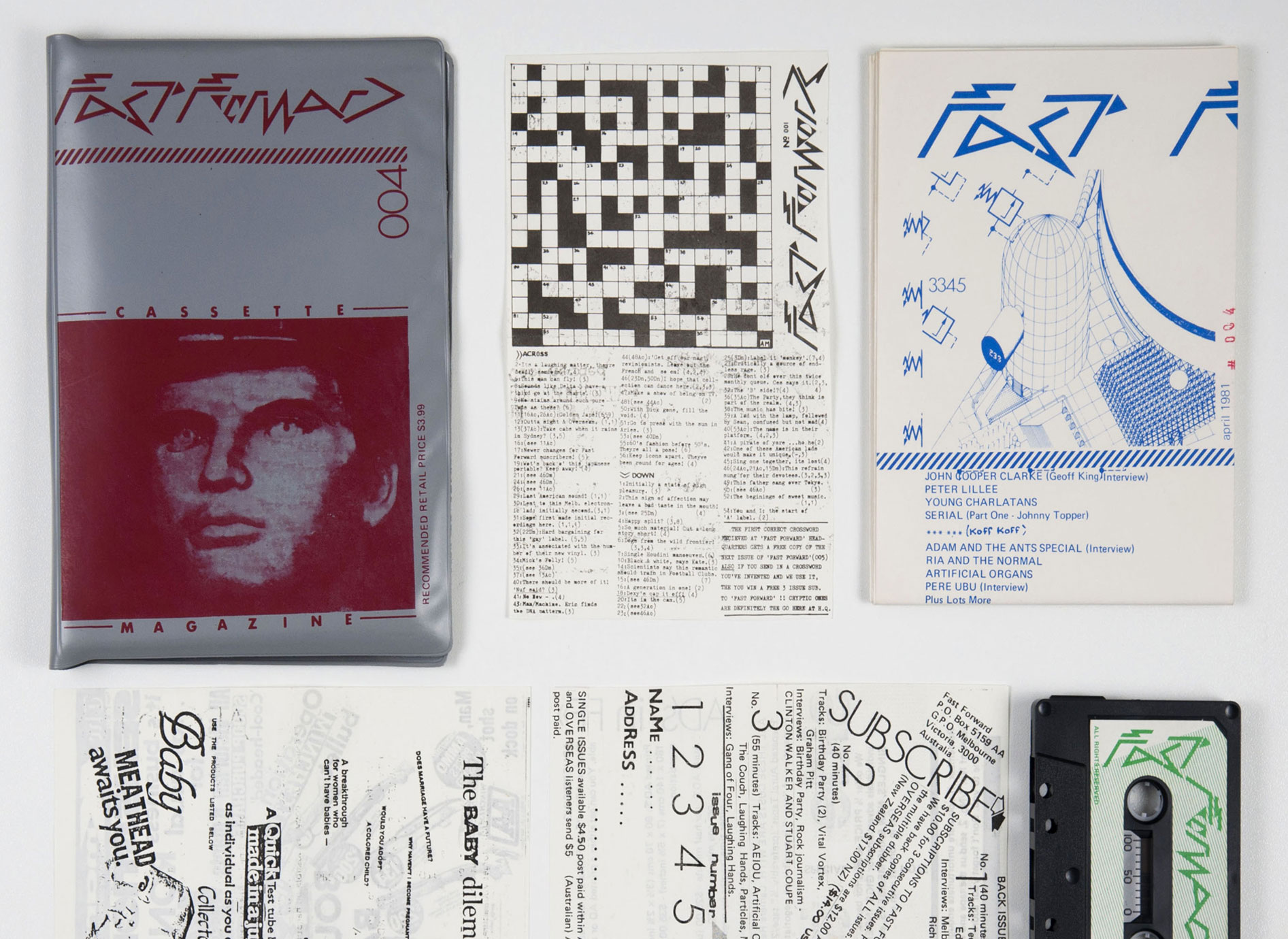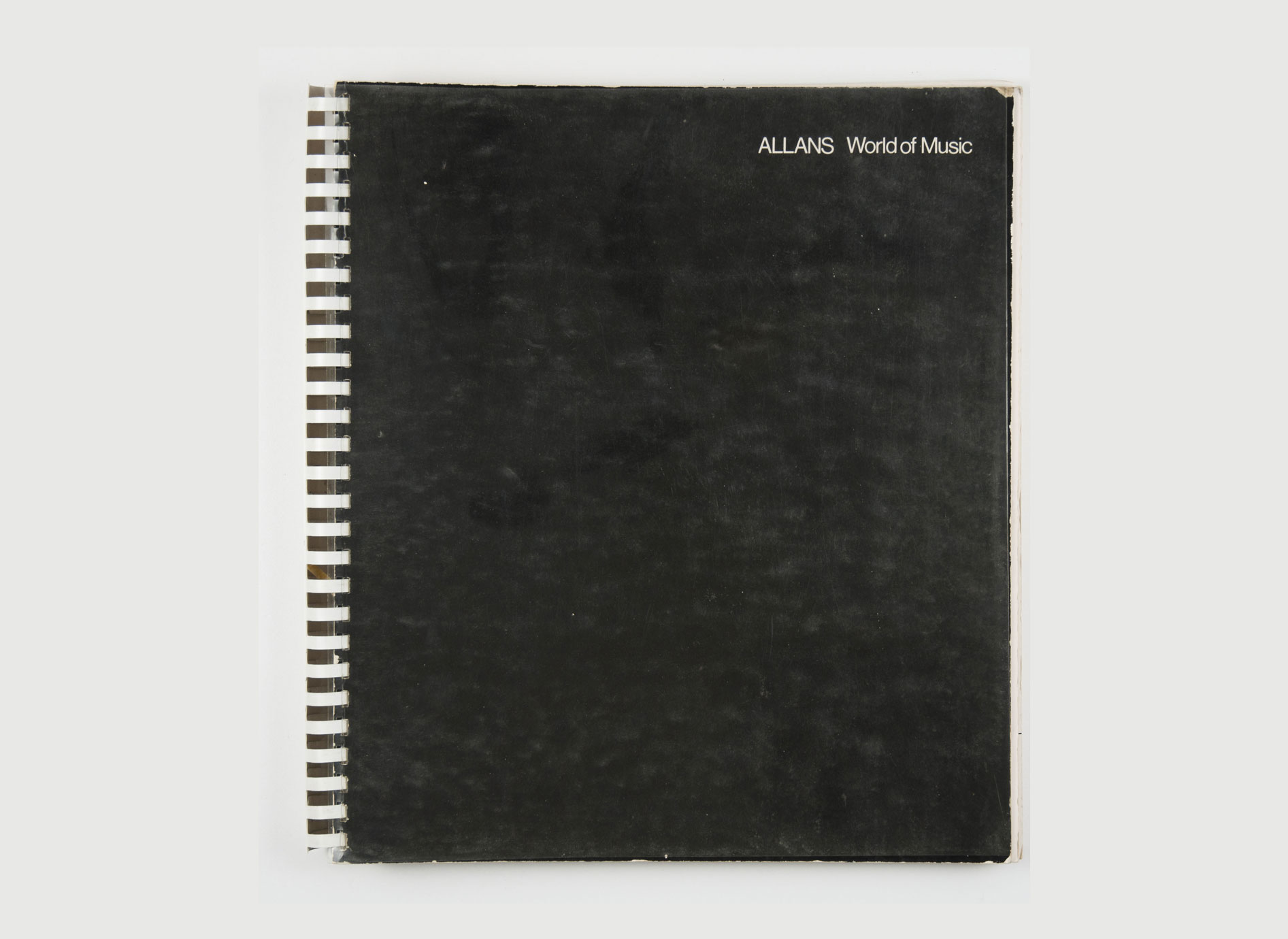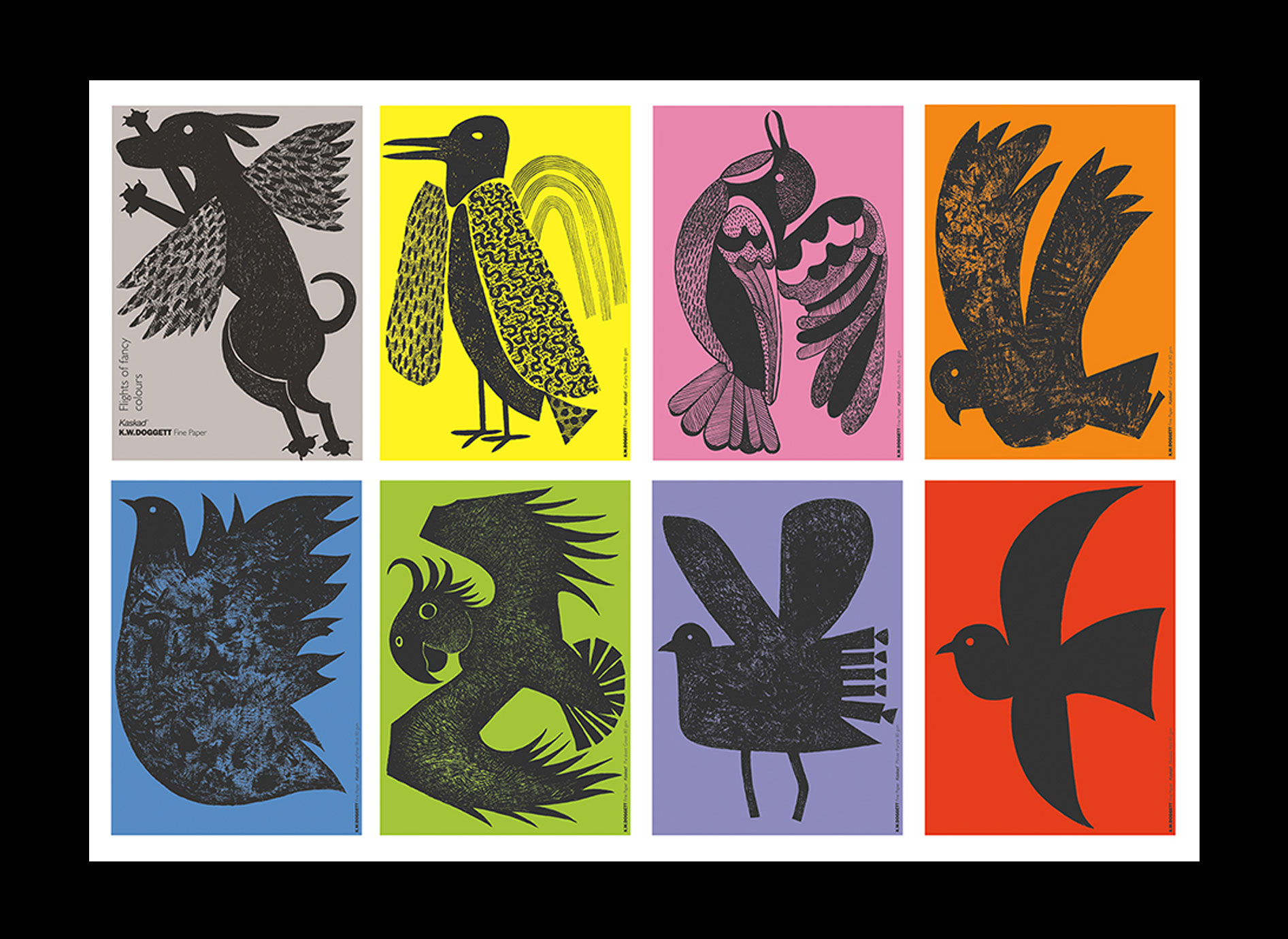
Materials and Tools
as Catalysts of Invention in Graphic Design Ideation
“However, this is not magic’. These words of Douglas Cooper’s (2018: 136) recognise a fundamental aspect of design ideation, the intention of designers to explore and utilise material qualities to develop and communicate their ideas. Designers’ implement a type of design language, identified in this article as ‘material literacy’, that interprets meanings expressed in material properties. It is important to demystify this occurrence through research and practical analysis to understand the extent of inventiveness available to technologically diverse post digital graphic design practitioners.
The concept of ‘material literacy’ is the culminate finding of doctoral research into the significance of materials in graphic design ideation [Grigg, 2018]. Whilst the definition of the concept encompasses all manner of media including those digital and non-digital, the word ‘material’ refers to physical, non-digital matter throughout the article unless explained otherwise. Materials are sometimes referred to as tools or technologies because their use is often inherent. By means of case studies, the graphic design processes of David Lancashire and Jenny Grigg were examined. The purpose of this article is to introduce and define the concept ‘material literacy’ and argue the relevance of its introduction to contemporary design research.
The article refers to an increasing body of design literature, that, without identifying the term has led to the definition used throughout this article. In particular, the article engages with the shared interests of research published in ‘Computational Making,’ a special issue of Design Studies compelled to re-address the importance of non-digital material practices. To reassert ‘making’1 as central to design enquiry, the editorial of that issue stated it was time to reconnect ‘making’ with design, but to connect in a way that avoids what has become a habitual conflation of ‘making’ in design with digital technologies, (Knight; Vardouli; 2015: 1–7). The problem being the loss of the starkly important distinction regarding design creativity—that different tools offer designers different inventive capabilities during the process of conceiving designs. A notion historically accepted in relation to tools and tool-use, in 2020 it remains necessary to stress this also applies to digital tools. It is important to teach graphic design students that digital tools offer particular capabilities but not all capabilities. Conducted concurrently with the doctoral research, research into ‘computational making’ identified a range of factors identified by the term ‘making activity’, (2015: 2).2 These factors appeared similarly in the findings about materially-focused graphic design ideation, and this paper proposes they, among others, constitute ‘material literacy’.
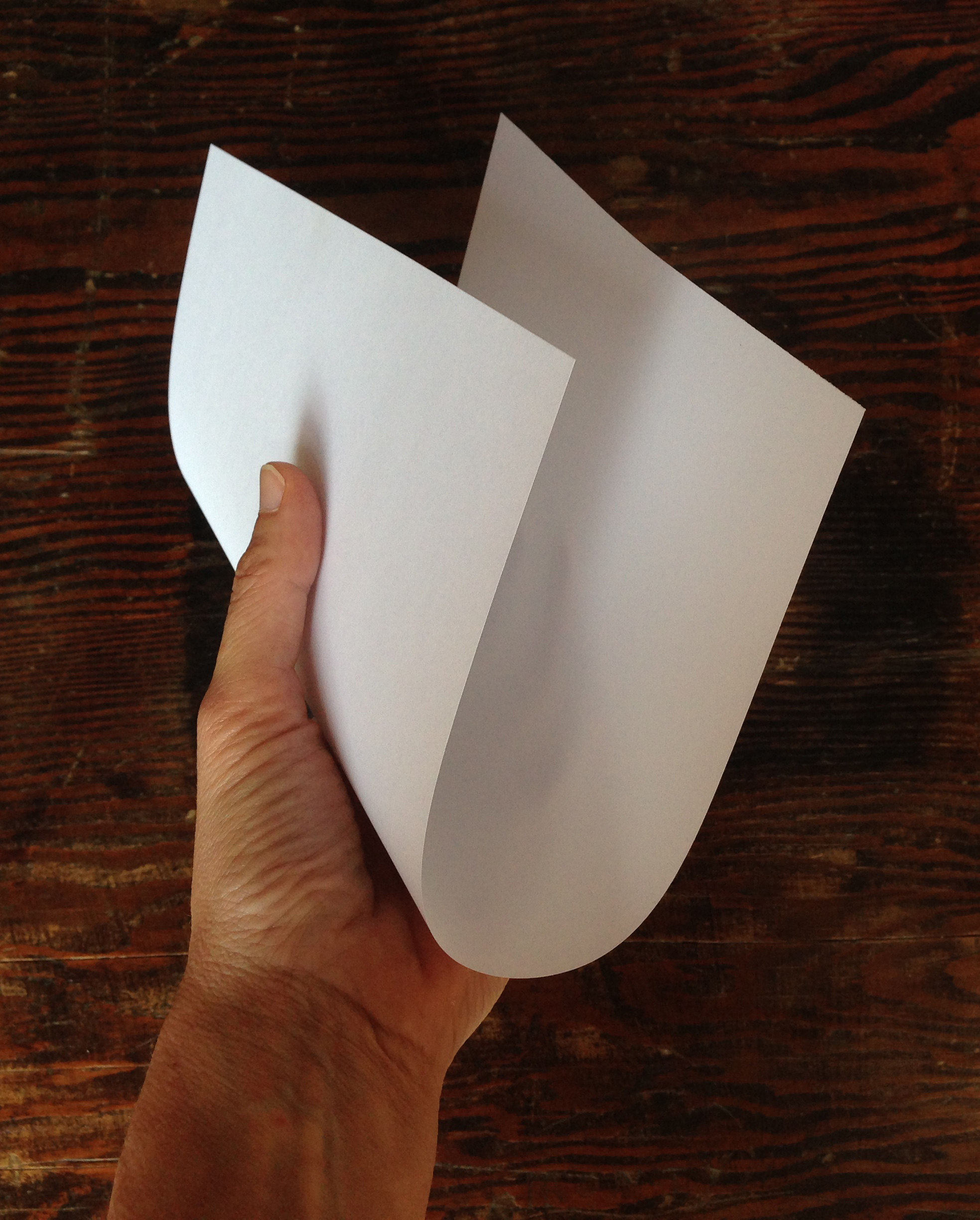
An epistemology of practice
A long-standing recognition that little of what is involved in the process of designing is understood by non-designers is the foundation of the research. A professional designer since 1990, I understood that solving ‘wicked problems,’ a term coined in 1973 by Horst Rittel (as cited in Buchanan, 1992: 15), is the crux of successful design, yet, the complexity of finding solutions to these problems receives little or no representation in the professional practice of the research field. Ironically, the challenges associated with unravelling such complexity dictate that the particularities of this knowledge exist almost entirely in the hidden, tacit knowledge of designers. Donald Schön identified that because designing is implicit in its actions it is easier to ‘do’ than speak about, and the lack of available tacit design knowledge is obstructive to design research (1983: viii). Early in the project it became clear that both of the graphic design cases tacitly sought material properties to decipher design problems.
Project overview and research methodology
Materially focused graphic design commonly produces items such as handwritten notes, drawings, prototypes, found materials (figure 9) and photographs of developing ideas (figure 10). Typically regarded as no longer useful and discarded after a design is resolved, these artefacts represent valuable, visual histories of design ideation, if retained. When studied, these provided access to forgotten design decisions and other reserves of dormant but retrievable tacit design knowledge. The analyses of actions implicit to graphic designing centred on my collection of processual design artefacts amassed over years of designing book covers for works of literary fiction.

My practice maintains a material focus partly to handle the high demand for visual invention required to design book covers. Book cover design is an area of graphic design practice that, regardless of technological developments, including the introduction of digital technologies, has attracted a consistently high level of design reinvention throughout its history, (2016, Holstein: 21). The underlying premise of the practice is that each unique authorial invention deserves an equally unique visual response. To meet expectations for repeated invention over more than two decades, the research of my practice revealed a tacitly initiated continuum of material enquiry. New ideas were accessed by seeking to respond to different materials. Most often these were different types of paper stocks.
The comparative study of David Lancashire’s practice diversified what could be learnt about materially-focused ideation. Beginning practice in the 1950s, Lancashire is one of Australia’s most experimental and materially diverse graphic design practitioners. His archive at the RMIT University Design Archives in Melbourne exhibits many designs that were commissioned by the Australian paper industry to advertise paper by featuring its various qualities. Even though most of Lancashire’s processual material had been discarded, by inspecting the appearance of completed designs and gaining insights into their creation by interviewing Lancashire, the multimodal, visual methodology pinpointed Lancashire’s material strategies for research. The vast topic of how ideas transpire was filtered through this shared, defining characteristic of the two cases. A line of enquiry developed around the strategic application of the generative properties of materials to catalyse ideas in both cases.
The definition of the concept of ‘material literacy’
The idea of ‘material literacy’ arose out of limitations faced in current design discourse terms such as ‘material thinking’. ‘Material thinking’ inaccurately suggests that these phenomena, ‘material’ and ‘thinking’, are isolated and that their pairing is optional. An alternate concept was sought to argue the inherence of these phenomena in the act of designing. Preferable for their recognition of the implicitness of thought and communication, definitions of ‘visual literacy’ offered an alternative. The concept of ‘visual literacy’ emerged from and drew significantly upon, the ‘many extremely powerful links’, between verbal and visual languages, (Avgerinou & Pettersson, 2011: 10). The novel argument of this article extends this concept also to include material languages.
Avgerinou & Pettersson state that visual literacies have been defined as ‘a group of abilities’. This implies that visual literacy has an active association with other means of visual language conveyance. Abilities of visual literacy have been specified as ‘(a) to read/decode/interpret visual statements, (b) to write/encode/create visual statements’, (2011: 4), actions that also occur when designers engage materials for communication. Material literacy also requires a designer to ‘read/decode/interpret’ material properties, and how these insights are applied in the creation of a visual statements can be described as writing, encoding and interpreting with materials.
To define material literacy by its relationship to visual literacy it is useful to provide two early examples of how these interrelate in graphic design, despite risking a simplistic portrayal. More detailed analyses in Section 5. A version of the process of encoding and decoding materials occurred; (a) when tissue paper’s translucency was noticed (decoded), (figure 4), (b) a study was made of this translucency in three different colours, (encoding), (figure 9), what was learned from this study informed more complex testing and was finally used to signify literary concepts, (further encoding), (figure 5). The difference between these two literacies is the type of information, both of which are visual, hence how the information is processed. Material literacy employs the sense of touch in addition to sight for example, but the point to ascertain here is that ‘material literacy’ can be understood in parallel to verbal and visual literacies, and as an ‘ability’ within the ‘group of abilities’ that are visual literacies.
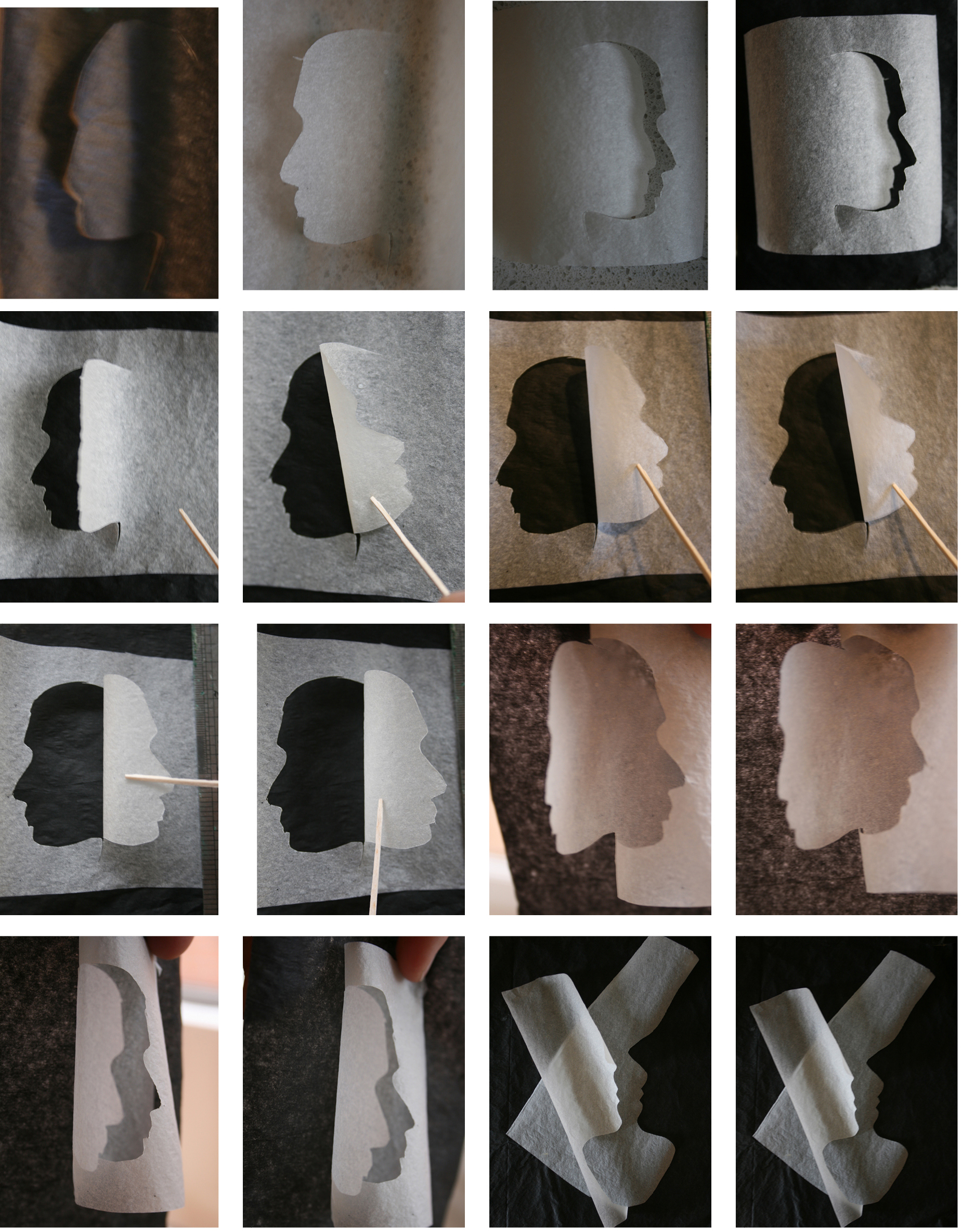
Figure 12 provides an example of visual and material abilities in simultaneous operation. The image was designed for a poster to advertise the Sydney Theatre Company’s production of Ingmar Bergman’s play Face to Face in 2011. Different positions for the woman’s face were considered during the design process. The folded neck and downturned face were chosen over other manipulations tested because the sense of self-protection appropriately signified the character being portrayed. The curved shape of the papercut suggests a woman to the visually literate. To the materially literate, the signification is made possible by a single piece of a translucent, particle based material that is dense enough to cast a shadow, malleable enough to bow, can be engineered to sit forward and further convey a woman’s presence, appears to be hand-cut paper because of the occasional nicked edge, and so on. The point is that observed and edited semiotic implications that appeared when the face was moved into different positions without tearing or creasing the paper, simultaneously engaged the designer’s visual and material design competencies, both of which were integral in visual translation and communication of the designer’s thoughts.
It is because materials are inherent to visual language that it is possible to further define the relationship between verbal and visual languages to include materials, and that comprehension and implementation of this language can be expressed as ‘material literacy’. The word ‘literacy’ appropriately infers that materials contribute a physical, visual, vocabulary that can be ‘read’, and accurately projects connotations of editing onto design. As words require crafting and shaping to nuance meaning in ideas expressed in text, material signification requires similar attention to detail, not only to communicate succinctly but, as explained in the examples above, to control nuance of meaning. To adapt Schön’s important theory, such explorations of material literacy can be understood quite literally as ‘conversations with the materials of a situation’, (1983: 78).
‘Material literacy’ is defined as all forms of interaction that occur between a designer and the materials and tools in use during design ideation, including a practitioner’s capacity to negotiate the material information that is presented and to interpret its meanings for others. Because of the semantic link between the ideas of ‘literacy,’ ‘visual literacy,’ and ‘material literacy,’ the new concept can be understood in relation to the familiar. Materially literate abilities are applicable to all tools.
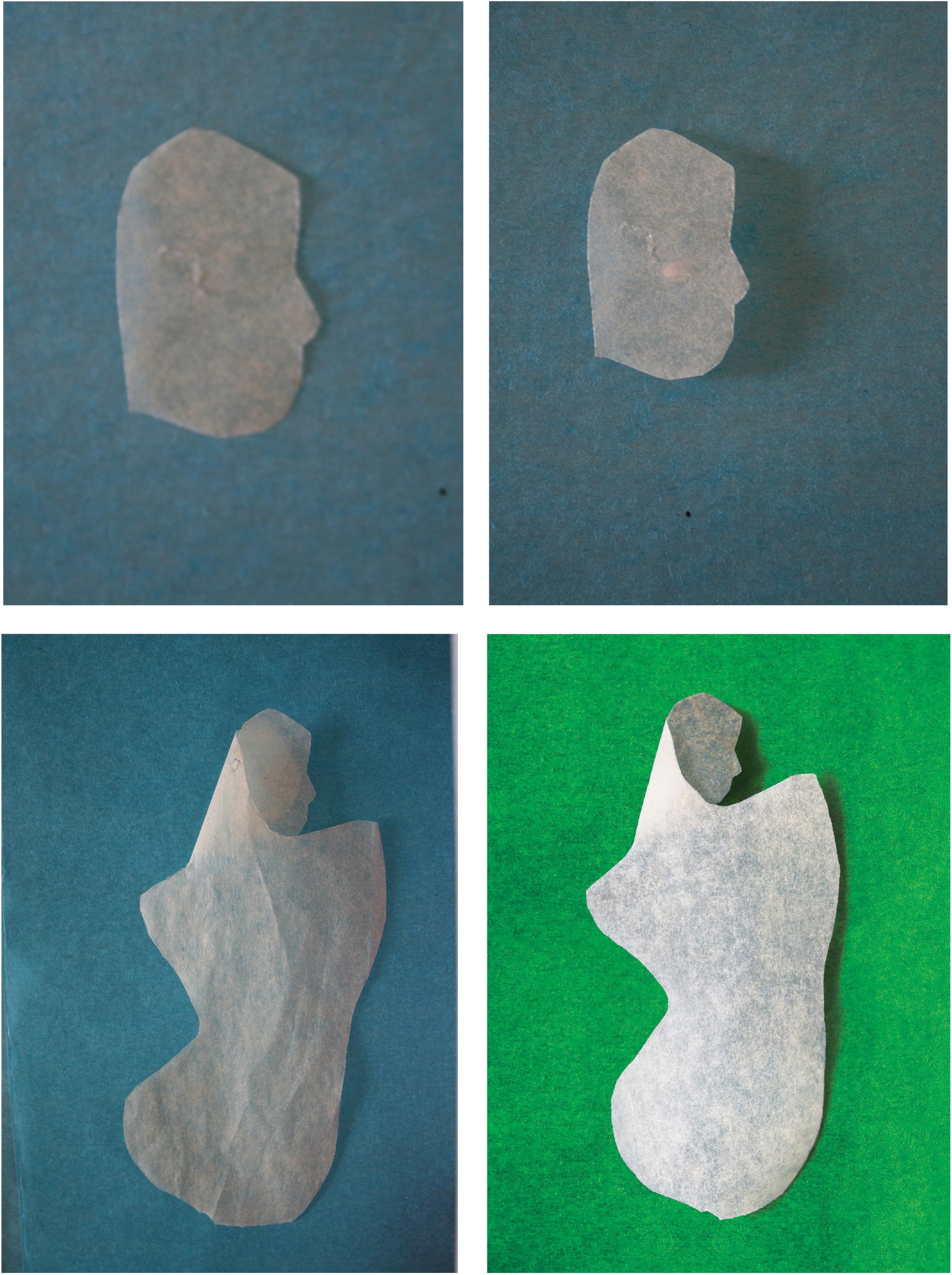
A resurging interest in materiality in contemporary design discourse
By 2013, the year the doctoral research project commenced, the use of digital technologies in graphic design was firmly entrenched, and conversations around the topic of materiality reverberated with connotations of anachronism and nostalgia. However, working with and teaching young designers, these criticisms were easy to question. Materially expressed work was disconcertingly inevident but interest in its practice was easily provoked. Inspired by the experimental diversity and tactile outcomes of graphic designs conceived independently of software, one young colleague claimed these as ‘the good stuff.’ Also disconcerting was the reluctance of materially practiced design students to process and present ideas non-digitally fearing their understanding would be perceived as unsophisticated. This raised important concerns because it collapses the distinction between a sophisticated design thought and the perception of sophistication that the use of progressive technologies might persuade. Digitally presented designs can create the perception that a design idea is sophisticated, but digitally presented ideas are not conceptually sophisticated inherently.
In 2020, contemporary theory is well underway to re-establish ‘making’ as central to designing in a postdigital environment, (Knight; Vardouli; 2015: 1). Part of this endeavour is to re-appraise how the design intellect engages with design tools to question and ascertain what methods better facilitate successful designing. Prevalent in the discourse are comparisons between two categories of material use in design ideation. The category that uses drawing instruments to conceive but only simulate design outcomes is regarded out-dated, and the category that conceives designs by utilising materials that are more demonstrative or fully capable of actualising a final design are considered progressive. Timothy Ingold (2012) dismisses historical theories which assume that forms are made by projecting preconceived intellectual concepts onto matter, because that is a notion that renders materials ineffectual or redundant in what they form. Benay Gursoy (2015: 29) adapts Canneart’s theory, ‘Making for’,3 to define contemporary architecture as a discipline overly committed to the Renaissance practice of conceiving spatial forms through linear drawings. To reinstate that which constitutes a successful design process regardless of the technological circumstances, the definition of ‘making activity’ (Knight; Vardouli; 2015: 2) 2 specifies the factors of design ideation that instrumentalise material proclivities, such as chance emergences during material improvisations.
John-Patrick Hartnett (2017: 19) and Douglas Cooper (2018: 120-139)5 each address the limitations on process-oriented experimentation at stake in a discipline increasingly adopting digital tools. Acknowledging corporate agendas given the current ubiquity of Adobe and Apple’s digital products in mainstream graphic design, Hartnett suggests that the price paid for the efficiencies that these products offer has been the autonomy of the designer to choose the tools they use. This is an alarming point given the potential of any project is inextricable from the tools in use. ‘The means of production have never seemed more removed from the designer’s hands ... The dream of liberation created by technological advancement and standardisation – has proved too powerful to resist: update by update, we have been lured in... Uniform dependence on these products commodifies the activity of design itself’. Given the earlier identification; ‘different tools offer designers different inventive capabilities in the process of making design’, it is clear that a reduction of tool variety, in this case to those only available via a computer, limit rather than maximise the imaginative capacity of designers. These are powerful arguments for the importance of reinstituting technologically diverse design practice, and it is valid to escalate Hartnett’s concerns about the loss of designers’ rights to the means of design production, to the loss of designers’ rights to the means of design conception. These debates magnify Ellen Lupton’s notice twenty years previously: ‘The challenge for educators today is to help designers become the masters, not the slaves, of technology’ (1998: 159-62).
Yet, materially literate design practice seamlessly includes digital materials. Aaron Seymour (2010: 527 - 533) points out that contemporary graphic design practitioners engage with digital tools such as laser-cutting, for ‘the conceptual reappraisal they encourage - to explore the material and sculptural boundaries of their discipline’. Mark Burry’s architectural methods for completing Antonio Gaudi’s historical designs for La Sagrada Familia provides an example that emphasises that digital tools are simply the most recently added tools in a designer’s repertoire. Spanning a century of technological advances, the project hybridises 3D printing with Gaudi’s plaster models made between 1883-1926. To offer a perspective applicable to tools yet to be invented, Burry recognises the current era as one of a paradox between the ‘traditional’ and ‘technology’ where we can ‘not throw away what we had, but ... absorb what we had with what we are having’ (2016). Whether a piece of paper or digital device, any object can be studied with a view to understanding what else it may be configured to do. The shared interest of current discourse in this area is the mindful and skilful application of material literacy.
(Read more ...)
-
‘On a conceptual level, we use ‘making’ as a keyword for action-centric, process-oriented attitudes toward the production and use of material things ... (Knight, T., & Vardouli, T). ↩
-
‘Making activity’ is the outcome of research instigated by the concluding panel of the 2014 Design Research Society Conference: ‘We approach making activity as a process that is time-based (unfolding in real-time, in the-moment), dynamic (changing), improvisational (dealing with uncertainty, ambiguity, and emergence), contingent (subject to chance and the unique), situated (within a social, cultural, physical environment), and embodied (engaging the (maker’s) active body and sensori-motor capabilities). We also see the study of making activity as vitally concerned with the things made and their physical and material properties, as well as the tools and technologies employed’, (Knight, T., & Vardouli, T). ↩
-
Gürsoy’s (2015: 31) definition of ‘Making for’, extrapolates Cannaert’s 2009 definitions of ‘model-making for architecture’ where the ‘focus is on the improvisational process and the unexpected discoveries that occur due to the properties of materials and techniques’. A different approach to the definition of ‘Making of’, where design ideas are conceived in representational media such as sketching. ↩
